Palmerston Road has been Southsea’s main shopping street since its Victorian development as a seaside suburb of Portsmouth. Thomas Ellis Owen was responsible for much of the planning and design of 19th-century Southsea. He is commemorated by Owens public house, originally named The Palmerston. Viscount (Lord) Palmerston served more than nine years as Prime Minister and died in office, in 1865, aged 80. He also had a series of forts built to protect Portsmouth harbour and its dockyard. However, the threat of invasion receded and the forts became known as ‘Palmerston’s Folly’.
An illustration and text about Lord Palmerston.
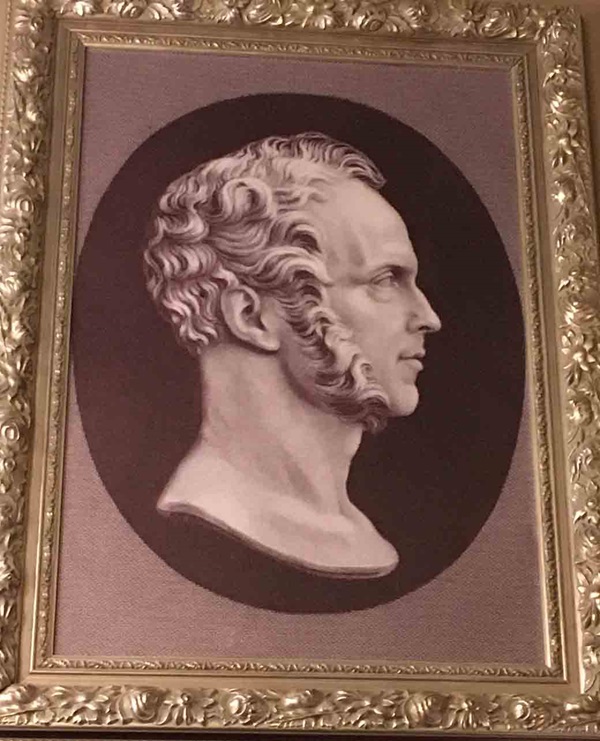
The text reads: Lord Palmerston, Henry John Temple, 3rd Viscount Palmerston. In office from 1807 until his death in 1865, serving terms as both foreign secretary and prime minister.
An illustration and text about The Lord Palmerston.
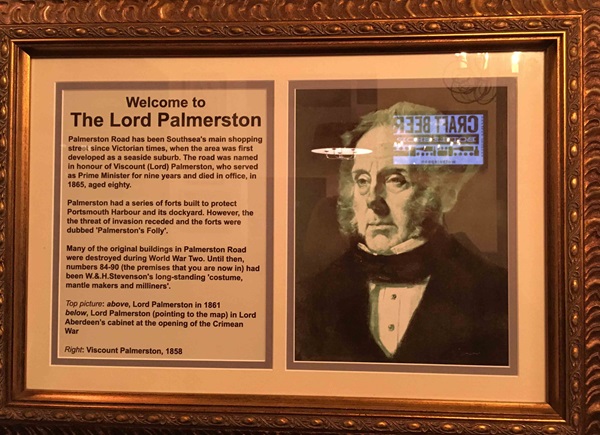
The text reads: Palmerston Road has been Southsea’s main shopping street since Victorian times, when the area was first developed as a seaside suburb. The road was named in honour of Viscount (Lord) Palmerston, who served as prime minister for nine years and died in office, in 1865, aged eighty.
Palmerston had a series of forts built to protect Portsmouth harbour and its dockyard. However the threat of invasion receded and the forts were dubbed ‘Palmerston’s Folly’.
Many of the original buildings in Palmerston Road were destroyed during World War Two. Until then, numbers 84-90 (the premises that you are now in) had been W&H Stevenson’s long-standing costume, mantle makers and milliners.
Right: Viscount Palmerston, 1858.
Illustrations and text about the Battle of Trafalgar.
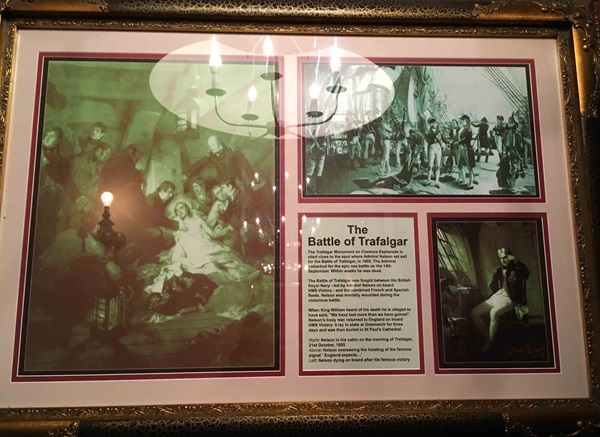
The text reads: The Trafalgar Monument on Clarence Esplanade is sited close to the spot where Admiral Nelson set sail for the Battle of Trafalgar, in 1805. The admiral embarked for the epic sea battle on the 14 September. Within weeks he was dead.
The Battle of Trafalgar was fought between the British Royal Navy – led by Admiral Nelson on board HMS Victory – and the combined French and Spanish fleets. Nelson was mortally wounded during the victorious battle.
When King William heard of his death he is alleged to have said, “We have lost more than we have gained”. Nelson’s body was returned to England on board HMS Victory. It lay in state at Greenwich for three days and was then later buried in St Paul’s Cathedral.
Right: Nelson in his cabin on the morning of Trafalgar, 21 October, 1805
Above: Nelson overseeing the hoisting of the famous signal ‘England expects…’
Left: Nelson dying on board after his famous victory.
Photographs and text about HG Wells.
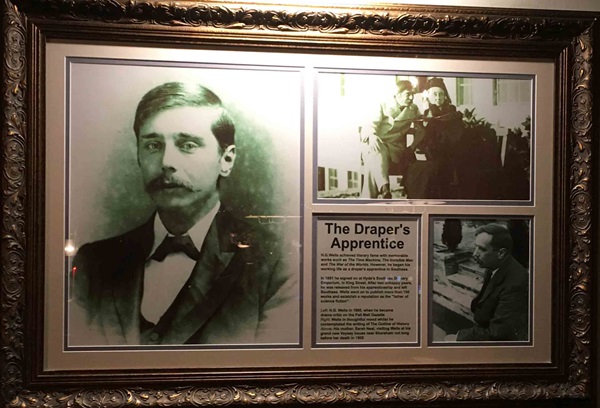
The text reads: HG Wells achieved literary fame with memorable works such as The Time Machine, The Invisible Man and The War of the Worlds. However, he began his life working as a draper’s apprentice in Southsea.
In 1881 he signed on at Hyde’s Southsea Drapery Emporium, in King Street. After two unhappy years, he was released from his apprenticeship and left Southsea. Wells went on to publish more than 100 works and establish a reputation as the ‘father of science fiction’.
Left: HG Wells in 1895, when he became drama critic on the Pall Mall Gazette
Right: Wells in thoughtful mood whilst he contemplated the writing of The Outline of History
Above: His mother, Sarah Neal, visiting Wells at his grand new Voysey house near Shoreham not long before her death in 1905.
Photographs and text about Alec Rose.
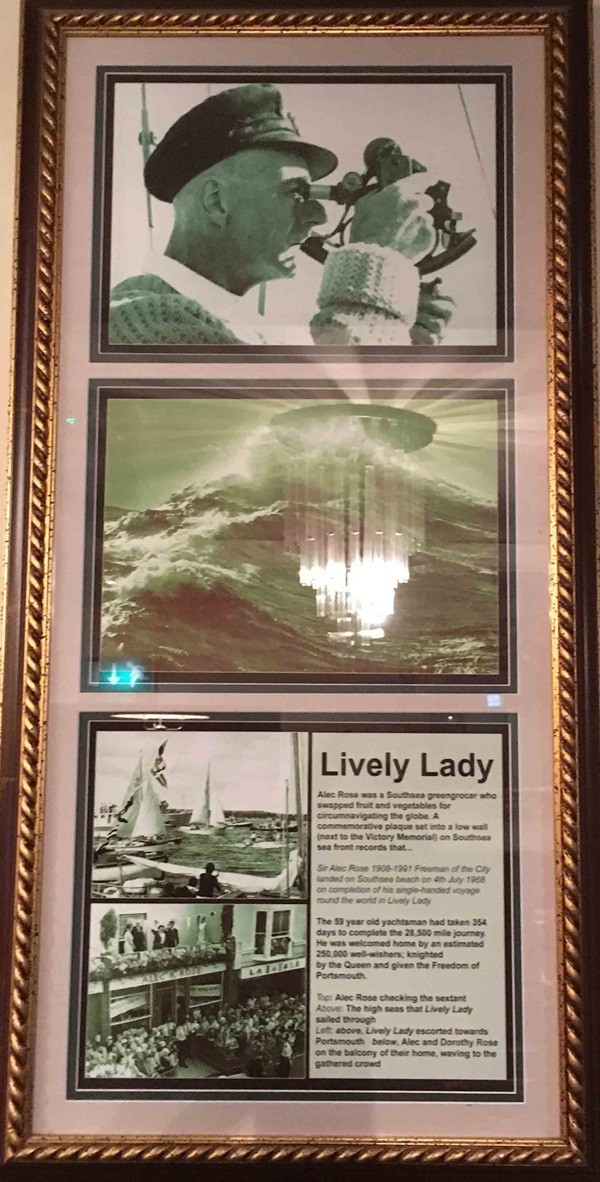
The text reads: Alec Rose was a Southsea greengrocer who swapped fruit and vegetables for circumnavigating the globe. A commemorative plaque set into a low wall (next to the Victory Memorial) on Southsea sea front records that…
Sir Alec Rose 1908-91 Freeman of the City landed on Southsea beach on 4 July 1968 on completion of his single handed voyage round the world in Lively Lady.
The 59 year old yachtsman had taken 354 days to complete the 28,500 mile journey. He was welcomed home by an estimated 250,000 well-wishers; knighted by the Queen and given the Freedom of Portsmouth.
Top: Alec Rose checking the sextant
Above: The high seas that Lively Lady sailed through
Left: above, Lively Lady escorted towards Portsmouth, below, Alec and Dorothy Rose on the balcony of their home, waving to the gathered crowd.
A photograph and illustrations of Palmerston Road.
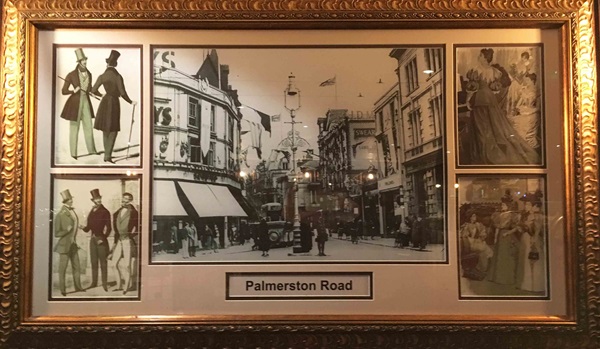
A photograph and illustrations of Clarence Pier.
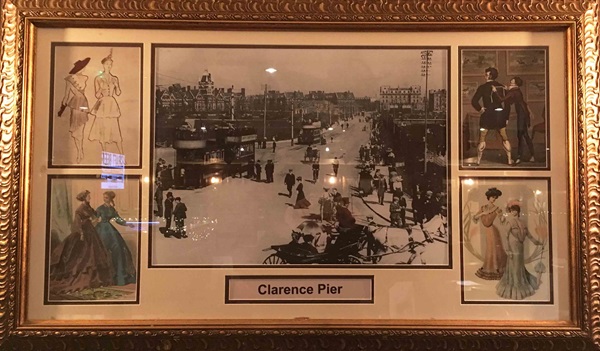
A photograph and illustrations of Clarence Esplanade.
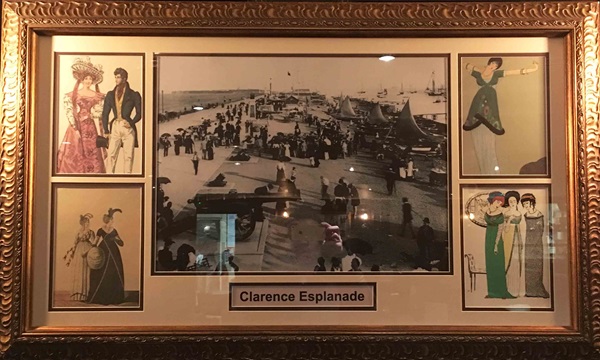
If you have information on the history of this pub, then we’d like you to share it with us. Please e-mail all information to: pubhistories@jdwetherspoon.co.uk